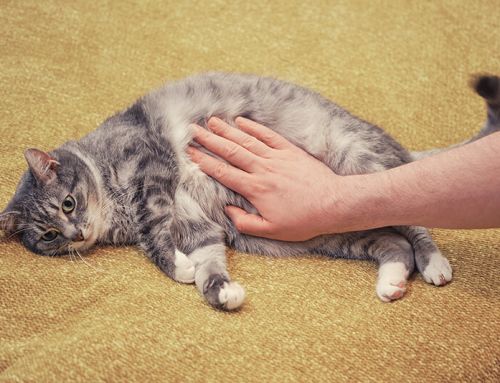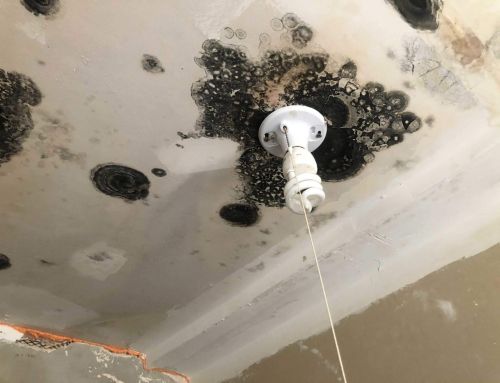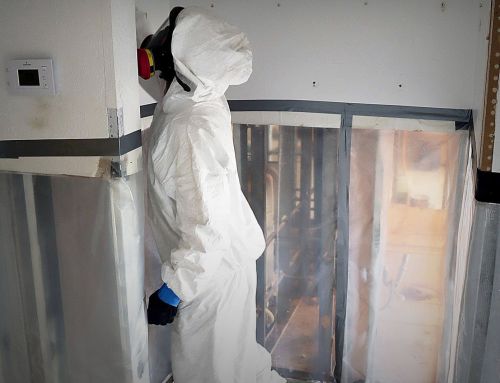Molds are essential organisms to the planet’s ecosystem, but they can cause havoc when they invade your home. Their natural habitat is usually warm, dark and damp places. Although mold is unsightly, it causes problems that are far worse than mere cosmetic issues. These fungi can affect your health and damage your HVAC system. Let’s examine common signs of mold infestation to know when you need to take action.
1. Your Wallpaper Is Peeling
Although some scruffiness and discoloration are typical effects of your wallpaper aging, sometimes the signs are extreme. Surface abnormalities like cracking or unusual pealing can indicate the presence of excess moisture in your walls. Moisture is a leading mold precursor. So, inspect your walls regularly for peeling and discoloration.
2. The Wall Paint Is Bubbling
Does the paint on your walls look as though it’s bubbling? This is common in bathroom walls and near windows. The leading cause of this damaged paintwork is excessive moisture, but it might also be caused by mold issues. Unfortunately, you cannot cover up the problem with a fresh coat of paint; you need to investigate the source of the moisture. Sometimes it’s too much humidity or leaking plumbing. If it’s the latter, you should hire a plumbing expert to correct the problem. You can repaint the walls after they fix the moisture issue. Remember to clean, patch and scrape the walls before applying the first coat.
3. Strange Smells Are Coming From Your HVAC Unit
If there is a nauseating smell coming from your HVAC, the chances are that there is an impending danger. Stand-alone air conditioning units are the biggest culprits for mold growth because they are dark, damp, and often exposed to warm temperatures. Putting your AC inside a closet or the basement during the winter also increases the possibility of mold infestation. Hire an HVAC specialist to inspect the equipment regularly to prevent mold from growing inside the parts.
4. You Have a Cold That Doesn’t Subside
Mold reaction symptoms can be as mild as a prolonged cold and sneezing fits. If you notice a runny nose that never goes away, there is a chance of mold infestation in your house. Take note whether the symptoms worsen after spending time in a particular room or after visiting the basement.
5. The Grout Between the Shower Tiles Has Darkened
If you notice dark grout in your shower, it could be mold. In most cases, though, this is the harmless kind. However, if the faucet in your bathroom has been leaking for a while, you should take it seriously. You might be dealing with toxic fungi that should be handled only by professionals. Consider sending a sample to a professional lab to test for toxicity.
6. Your Eyes Are Stinging and Watery
Many people develop allergic reactions to mold, and a common symptom is itchy, watery eyes. You may also experience nasal congestion and coughing. If you suspect that mold is behind this problem, you need to contact a doctor immediately because the fungus that caused it might be toxic. An allergist will help since they can run skin and blood tests to confirm the cause of the allergic reaction.
7. Your Asthma Has Worsened
When mold spores find their way to your lungs, they might cause severe congestion. Research shows that mold or dampness in the house is responsible for at least 5% of the asthma cases in the United States. If your symptoms are worsening, there is a possibility that your respiratory system has been compromised by mold. There could be hidden mold in your house. Mold might also cause a rare but severe condition known as bronchopulmonary aspergillosis. It is a chronic inflammatory and allergic reaction that causes excessive coughing, sneezing and shortness of breath.
8. Your Baby Coughs at Night
Infants exposed to moldy walls are three times more likely to develop asthma by the time they turn seven. If your baby constantly coughs at night, you need to take the symptoms seriously and take relevant action. Watch out for fast breathing, whistling sounds when exhaling, frequent chest colds and wheezing.
9. You Feel Itchy
Most people expect mold to thrive in basements, but they don’t know their clothes are perfect havens for it as well. Damp clothing is notorious for holding mold, especially when you leave wet towels on the floor. If you dry your laundry indoors, there is a high chance of mold attacks. Ensure you dry wet clothes immediately and avoid dumping wet towels in the bathroom.
10. You Live in a New Home
Although this seems unlikely, modern homes often harbor mold infestations. Since they are built very tightly, unlike old, drafty stone homes, new houses tend to accumulate humidity. In many of them, the ventilation system fails to quickly get rid of the indoor moisture. Modern appliances like dryers and dishwashers might also generate excessive heat and humidity required to feed a growing fungal population.
11. Your House Smells Musty
Unpleasant, strange smells in your house are a telltale sign of mold infestation. The severity of the smell indicates the extent of the problem. It’s not a matter of how good your cleaning skills are. Hidden mold can cause severe health risks. It tends to affect the elderly because their bodies are fragile and the symptoms can become chronic. Look out for a musty or moldy odor, especially if you live close to a dumping site.
12. You Use a Humidifier
The moist air could be doing wonders for your skin, but it might also encourage mold growth. Turning the humidifier on to a low setting during the summer months or in the dry winter might not cause a big problem. However, if your humidifier is switched on 24/7, look out for signs of mold growth.
13. The Attic Insulation Is Lumpy
Wave away the cobwebs and examine the insulation inside your attic. If it looks uneven or very lumpy, that’s a sign of a more significant issue. The insulation might be in bad shape because of unforeseen roof leaks that cause potential mold problems. If your attic has poor circulation or poor ventilation, it could encourage mold infestations.
14. Your Sink or Toilet Has Flooded
If you experience a flooding problem in your house, the chances are that mold is on its way. Although large basement floods are a surefire way of encouraging mold growth, even minor incidents like leaking pipes or an overflowing bathtub are precursors to mold infestation.
15. The Floors Are Squishy
Soft spots on your floor are a sign of an impending mold problem. If you can reach the subfloor via the basement or a crawlspace, inspect it for moisture. Pull up a piece of the floor if you cannot assess the wet part quickly. The humidity and mold growth will eventually expand and get out of hand if you don’t take precautions early. If it has infected a small section of the floor, an expert can use mold remover to curb the spread.
Rely on the Professionals
If you are suspicious of mold infestation in your home, your best bet is to contact our remediation experts at Pur360. We can assess the situation and eliminate the problem if necessary. We routinely perform mold testing and eradication. You can also rely on us for odor and stain removal, sanitization, air purification, carpet and drywall removal, drywall repair and painting. We also rent dehumidifiers and fans. For information or assistance, call us today.



